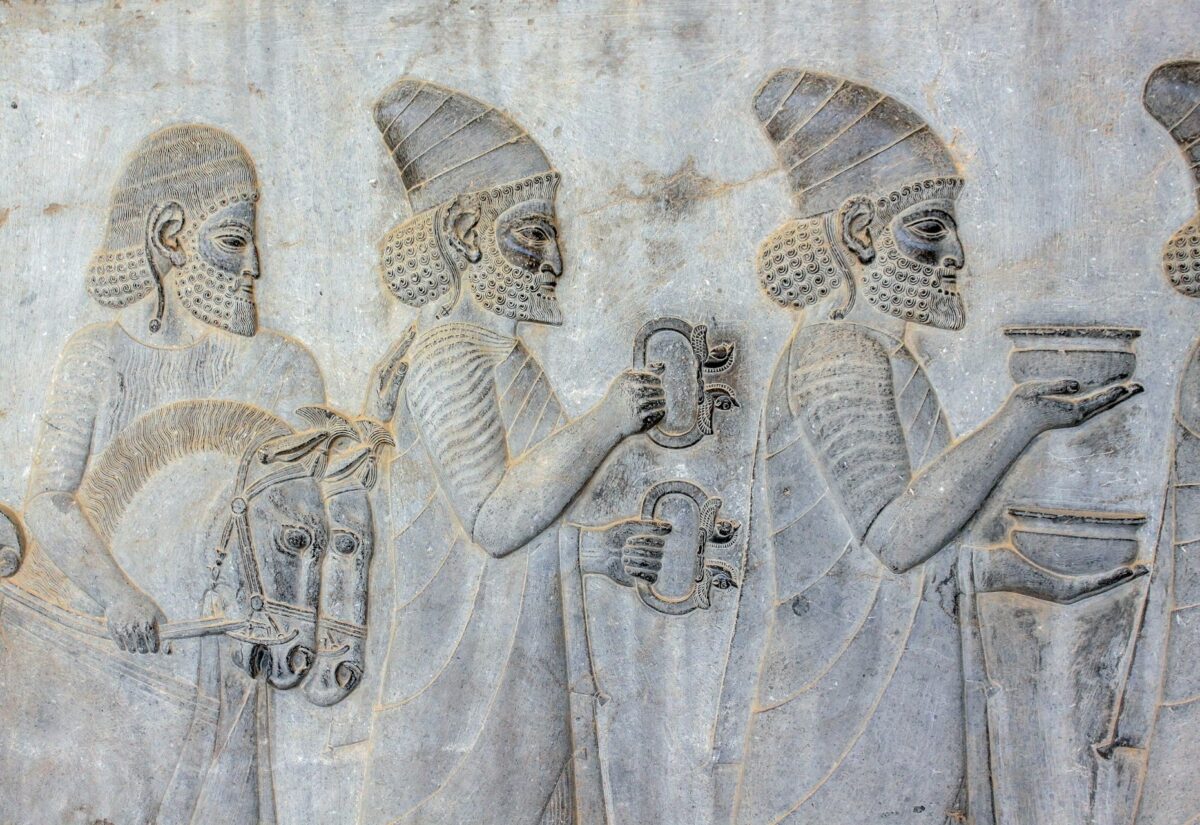 Unsplash/Mostafa Meraji
Unsplash/Mostafa MerajiThroughout history, people have gone to great lengths to stay clean—or at least, what they believed counted as clean at the time. Hygiene hasn’t always been about soap and water. In fact, many ancient and medieval beliefs about cleanliness would make modern sensibilities shudder. From practices that spread more illness than they prevented to rituals that blurred the line between hygiene and superstition, history is full of strange ideas about what it meant to be clean. These beliefs often reveal more about fear, religion, and status than they do about health. Here are some of the oddest and most intriguing beliefs about hygiene from the past.
1. Bathing too often would make you sick.
In medieval Europe, it was commonly believed that water opened up the pores, leaving the body vulnerable to disease. Instead of refreshing the body, baths were seen as risky invitations to illness. During times of plague, especially in the 14th century, physicians advised people to avoid baths altogether. They feared that warm water weakened the body’s defences and that open pores allowed the “miasma” or bad air thought to carry disease to seep in. Cleanliness, in this context, was not worth the risk of death.
2. Wearing linen could “wash” the body.
Some 17th-century Europeans believed that changing into clean linen absorbed sweat and odours from the skin, effectively cleaning the body. Linen shirts were prized for their ability to draw impurities away, and people would often change shirts daily while avoiding actual baths for weeks. This belief helped fuel the idea that visible cleanliness—fresh clothing—was a substitute for true bodily hygiene.
3. Urine was used as mouthwash.
The ancient Romans weren’t squeamish when it came to oral hygiene. They used stale urine to whiten their teeth and rinse their mouths. The high ammonia content acted as a cleaning agent, though the smell would have been unbearable by today’s standards. Roman urine-based products were so popular that Emperor Nero reportedly taxed the trade of collected urine.
4. Dirt was seen as a protective layer.
Some people believed that a thick coating of dirt and oil could seal the skin against disease. In plague-era Europe, people avoided bathing for months, hoping that the grime would act as a kind of natural armour. Even medical advice sometimes supported this view, encouraging people to “seal” their skin against infection. Ironically, this belief likely helped spread illness rather than prevent it.
5. Perfume replaced bathing.
In places like 17th- and 18th-century France, bathing fell out of favour among the elite. Instead, strong perfumes and powders were used to cover up body odour. Entire wardrobes were scented, and perfume was applied to clothing, gloves, and even wigs. Some believed that fragrance itself had cleansing or protective properties, and elaborate grooming rituals replaced basic washing. Water was seen as dangerous, but smelling like roses? That was a sign of status.
6. Public baths were both healing and risky.
In Ancient Rome and later in Islamic civilisations, communal bathhouses were central to daily life and socialising. They were also places of cleanliness, healing, and even medical treatment. But during outbreaks of disease in medieval Europe, particularly in the 14th and 15th centuries, public bathhouses were shut down, blamed for spreading infection. Some believed that the mix of naked bodies and steam allowed diseases to breed and jump from one bather to another.
7. Water was feared as spiritually dangerous.
In various periods of medieval Christianity, bathing was linked to pride or vanity. Excessive concern with bodily cleanliness was frowned upon, while spiritual purity was prioritised. Some sects promoted the idea that too much attention to the body could distract from salvation. Monks in certain orders went for years without bathing, believing their souls benefited from the sacrifice.
8. Hair wasn’t washed, just powdered.
By the 18th century, particularly in France and Britain, hair care meant applying powders and oils—not washing with water. Flour-based powders, sometimes scented or coloured, were used to absorb grease and give hair a fashionable matte finish. Wigs were common, and they too were rarely cleaned. Lice were a regular part of life, and it was not unusual to wear special “lice-catchers” under the wig to trap the insects.
9. Soap was considered unnecessary—or harmful.
In many parts of early medieval Europe, soap was viewed with suspicion. Some believed it stripped the skin’s natural protective oils, while others saw it as an expensive luxury or an invention tied to pagan rituals. Many people believed that rubbing down the body with cloth or oil was enough to stay clean. Soap production did exist, particularly in Islamic and Mediterranean regions, but its use in daily life was far from universal.
10. Animal fat and ash were early cleaning agents.
Long before modern soaps, ancient people made cleaning agents from a mix of animal fat and wood ash. This lye-based substance was highly alkaline and effective at breaking down grease and grime, but it was also harsh on the skin. These soaps were functional, used more for laundry and utensils than for personal hygiene. Babylonian tablets dating back to 2800 BCE describe such concoctions.
11. Communal combs and toothpicks were standard.
In Ancient Greece and Rome, hygiene was sometimes a shared affair. After banquets, hosts would pass around communal toothpicks or provide shared grooming tools. Combs and tweezers were also passed from hand to hand in public bathhouses or social gatherings. The idea of personal hygiene as private or individual didn’t really exist in the way we understand it now.
12. Sweat was seen as a way to purify the body.
Saunas, steam rooms, and sweat lodges have long been used to expel impurities. In many cultures, sweating was considered a form of purification that cleansed the body from within. While this belief holds some merit—sweating does release some toxins—it was often used in place of washing. Some believed that if you sweated enough, dirt and disease would simply be expelled through the pores.
13. Wounds were packed with dirt or animal waste.
Ancient and early medieval medicine was full of remedies that seem reckless by today’s standards. One such practice was packing wounds with earth, animal dung, or mouldy bread in the hope that they would draw out infection or promote healing. While some materials did contain antibiotic properties—like mouldy bread, which could fight bacteria—others caused deadly infections. Trial and error didn’t always favour the patient.
14. Bloodletting was a form of bodily “cleansing.”
For centuries, bloodletting was seen as a key way to balance the body’s humours. Too much blood was thought to cause fever, agitation, or even madness. Doctors and barbers performed bloodletting routinely, sometimes with leeches, other times with sharp blades. It was believed that removing bad or excess blood kept the body healthy, and many viewed it as a type of internal cleaning, just as necessary as washing the skin.
Many of these beliefs were rooted in the scientific limitations of the time—but others were shaped by religion, superstition, or simple guesswork. What’s considered hygienic has changed dramatically across centuries and cultures, and today’s norms might one day seem just as strange. These forgotten rituals are a fascinating glimpse into how humans have tried—often unsuccessfully—to keep themselves clean and healthy throughout the ages.



